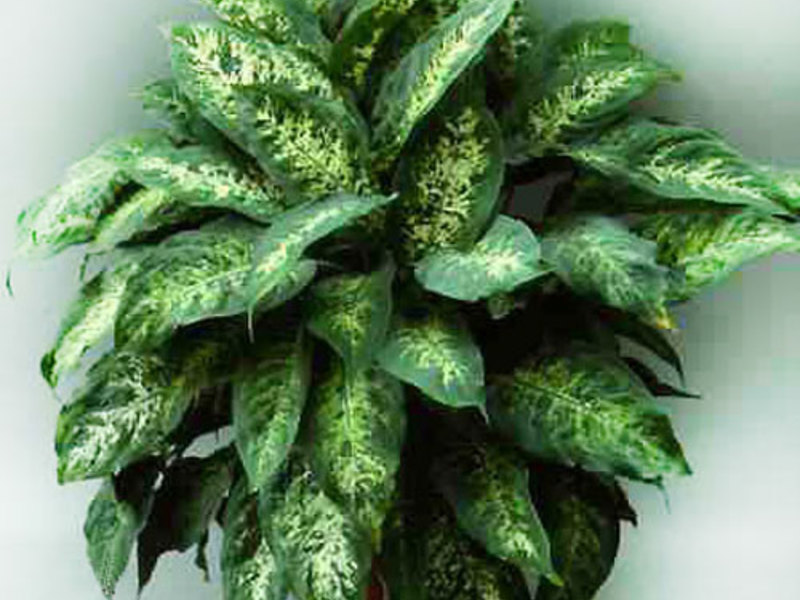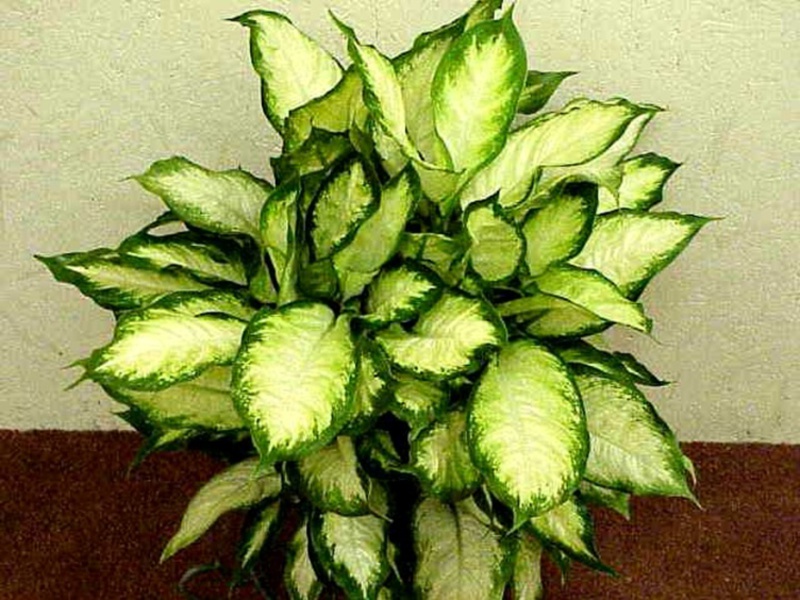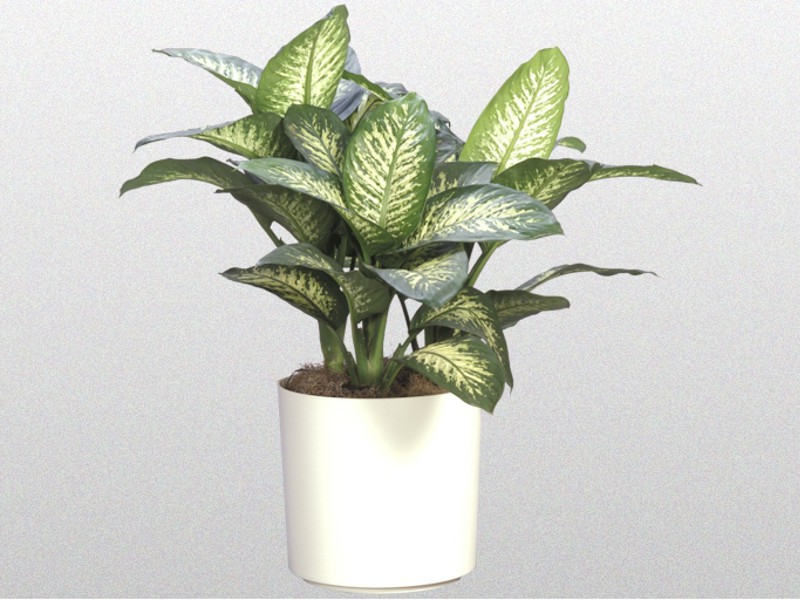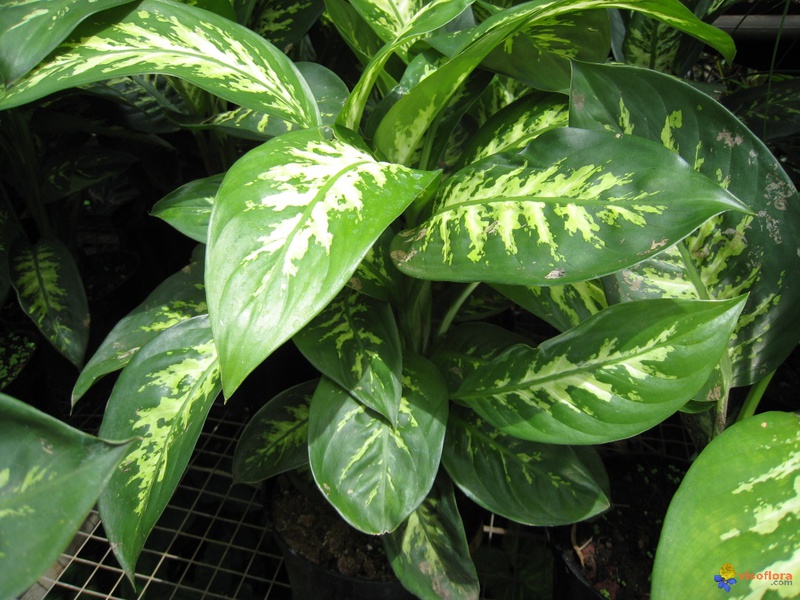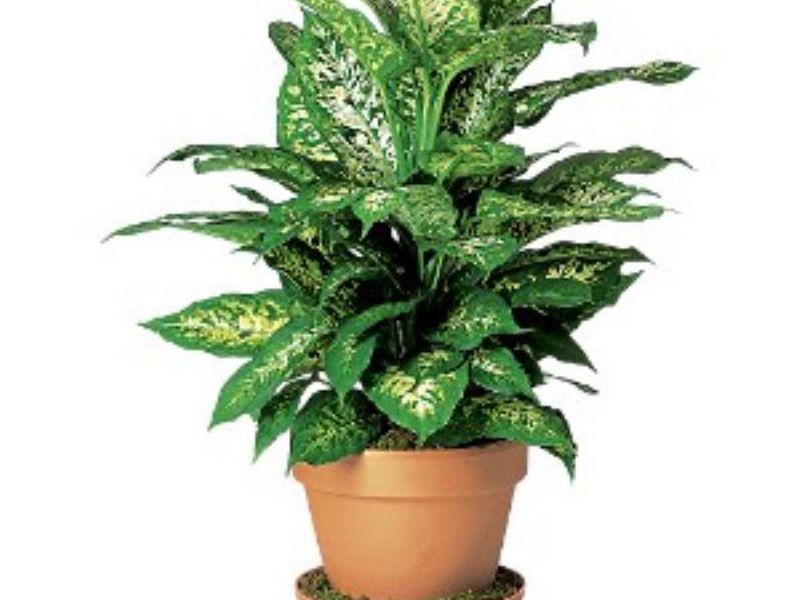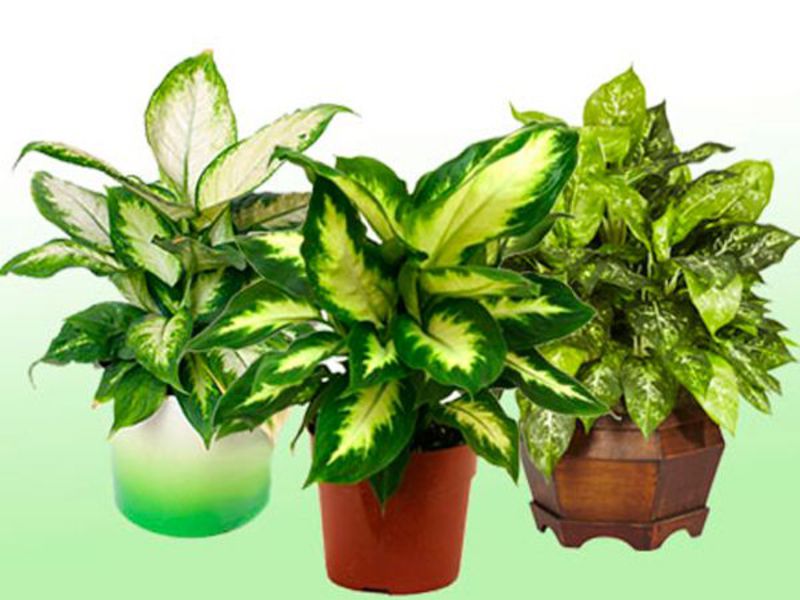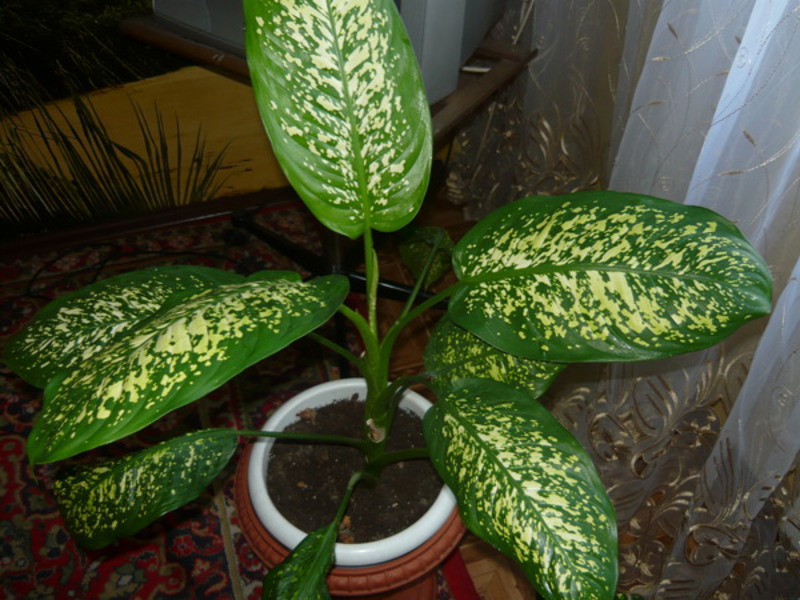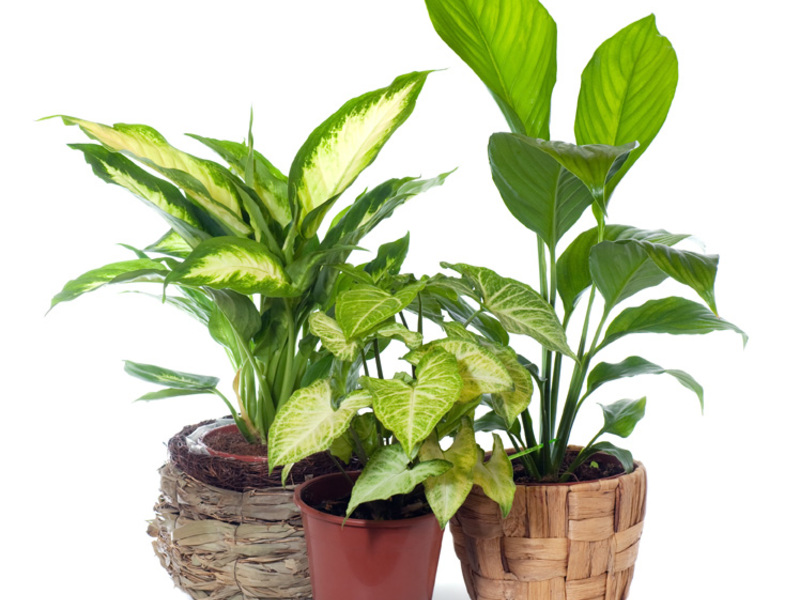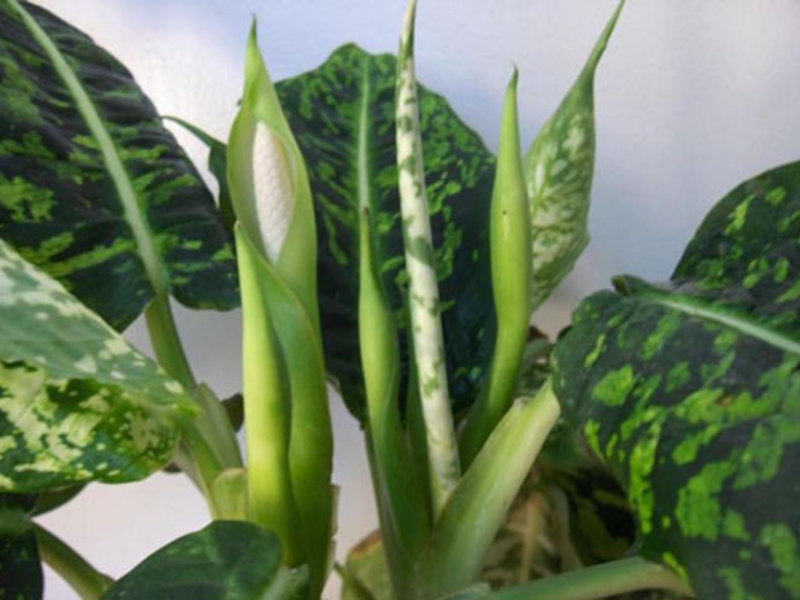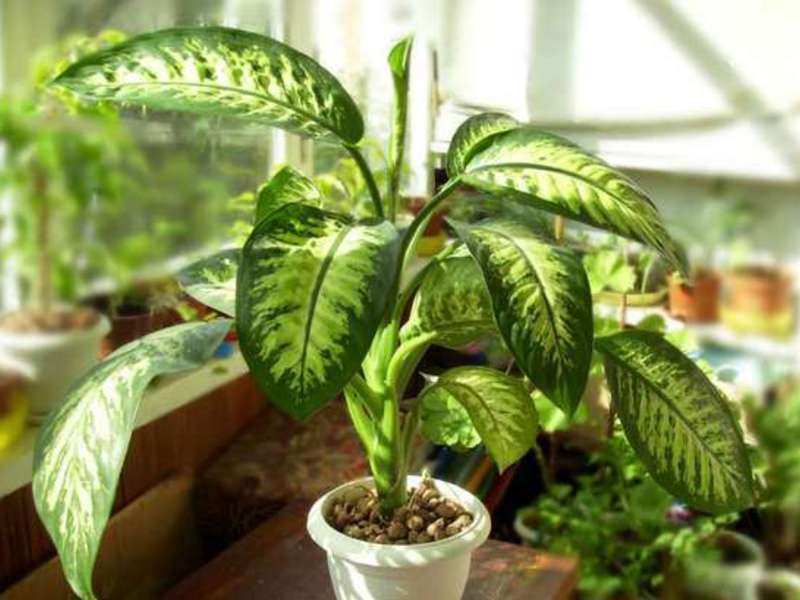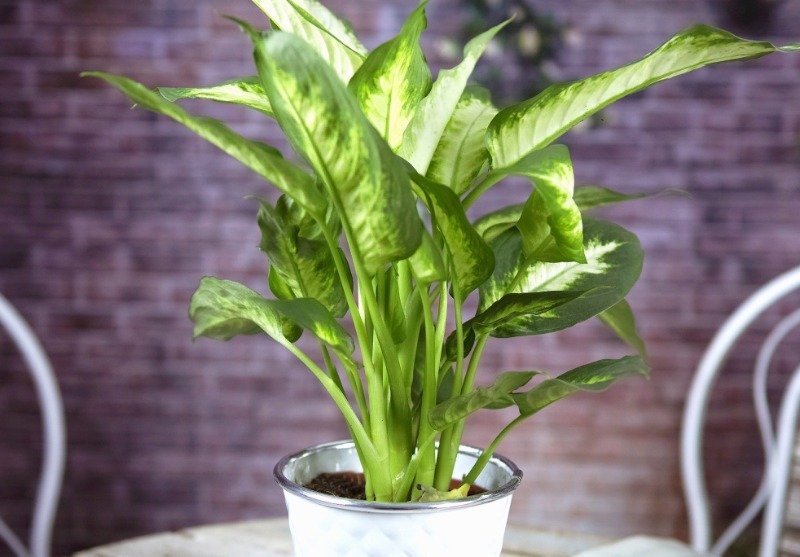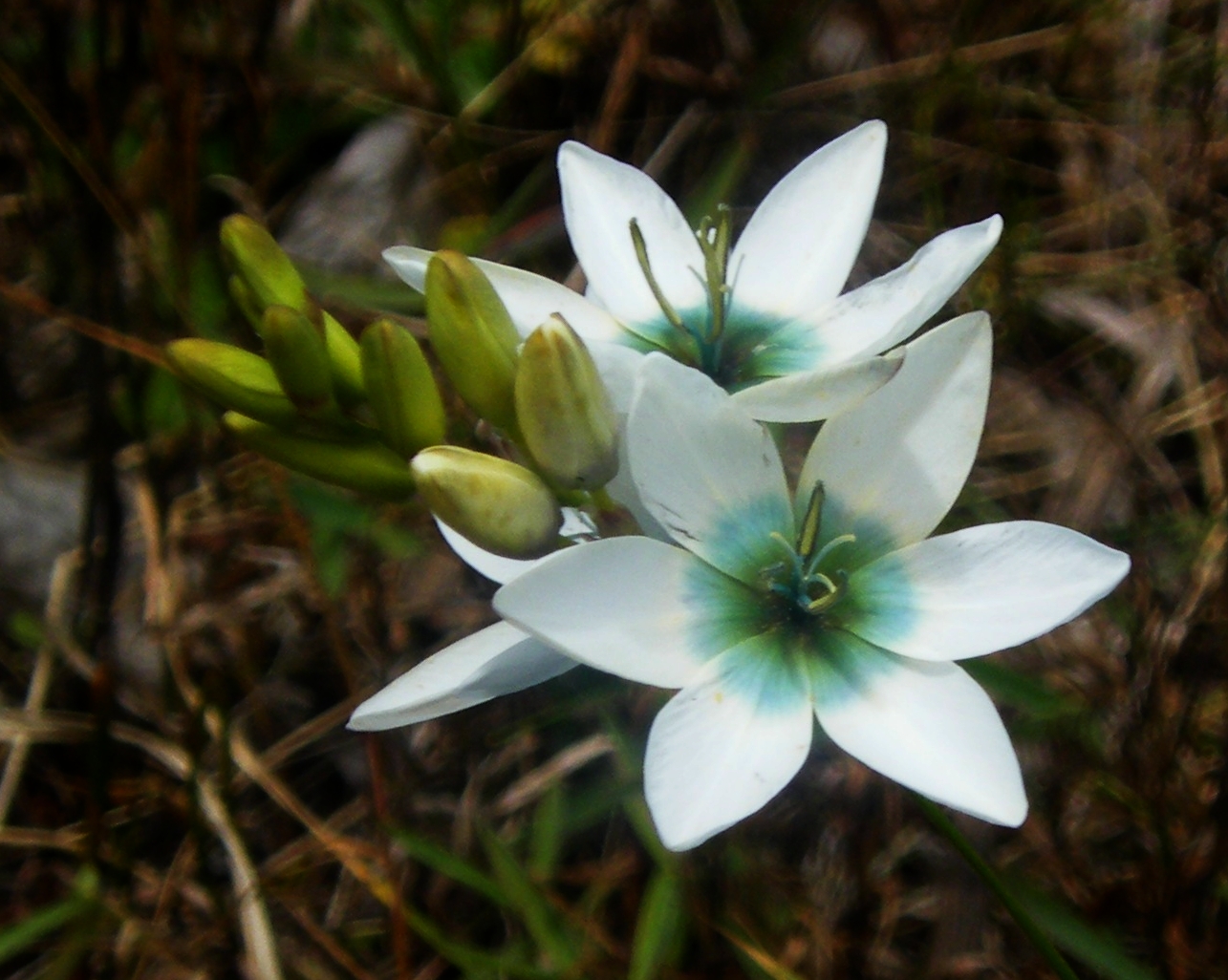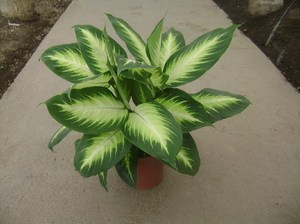 Dieffenbachia is a perennial herb that belongs to the Aroid group. This flower was born in the tropical conditions of South America. The plant has longer leaves, which, taking into account the species, can have a different color. On the surface of the leaves, spots of a salad, green, yellow hue are visible, as well as various strokes, dots and stripes. The bush has a small, straight trunk, which over time becomes flatter. Dieffenbachia blooms only in spring, continues to bloom for only a few days.
Dieffenbachia is a perennial herb that belongs to the Aroid group. This flower was born in the tropical conditions of South America. The plant has longer leaves, which, taking into account the species, can have a different color. On the surface of the leaves, spots of a salad, green, yellow hue are visible, as well as various strokes, dots and stripes. The bush has a small, straight trunk, which over time becomes flatter. Dieffenbachia blooms only in spring, continues to bloom for only a few days.
The flower grows pretty quickly. If the conditions of detention are correct, then one sheet appears every week. When you expand it, you can see the top of the next one. Large varieties can grow more than 2 meters, small species stretch up to one meter.
Content
Popular varieties of indoor dieffenbachia: photo and description
Now there are many different hybrids and varieties (more than 50) of dieffenbachia with different leaf colors. Let's talk about the most popular ones.
Dieffenbachia Leopold
The stem of this plant grows up to 6 cm. The petioles are much smaller than the leaves, have a pale green color with purple spots. The leaf looks like an ellipse, deep green, with a white vein in the middle. A cauliflower leaf about 15 cm in size surrounds the flower. The ear grows up to 10 cm. This is one of the most popular types for decorative planting. It is quite easy to care for this plant.
Dieffenbachia adorable
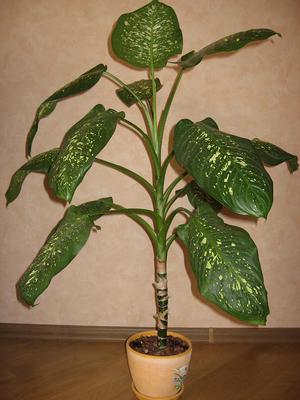 This plant, hardy to shady areas, grows well in warm rooms. The size of the leaves is up to 55 cm, the main trunk is more than 1.6 m. The leaves have a deep green tint and white stripes along the veins.
This plant, hardy to shady areas, grows well in warm rooms. The size of the leaves is up to 55 cm, the main trunk is more than 1.6 m. The leaves have a deep green tint and white stripes along the veins.
Dieffenbachia spotted
The bush grows up to one meter. The size of the petioles is equal to the plate, but may be slightly shorter. The leaf is up to 38 cm long and 11 cm wide. The leaf has an oblong shape with a point at the crown. The peduncle is short.
Dieffenbachia Camilla
Quite a common variety among gardeners. It grows in length up to 2.1 m. The trunk of this flower is tree-like and straight, the leaves are bright green, elongated, oval. The trunk is exposed from below, which makes the bush less attractive. In home cultivation, flowering dieffenbachia is a rather rare occurrence.
Read about houseplants that bring love and family happiness to your home here: https://flowers.bigbadmole.com/en/komnatnye-rasteniya/komnatnye-rasteniya-kotorye-prinosyat-v-dom-lyubov-i-semeynoe-schaste.html
Dieffenbachia: home care, photo and description
Although Dieffenbachia is quite popular among gardeners, it still needs careful personal care. This flower does not react well to drafts and cold. Also requires regular watering and pruning.
Watering
The soil in the pot in which the dieffenbachia is grown must be constantly moist. The flower requires regular watering. In winter, watering should be done more moderately. Before watering, the water is defended for several days. If the water is very hard, the tops of the leaves become brown and may crumble.To make the water softer, you can add oxalic acid... In summer you need to water every 2 days, in winter - once a week.
Lighting
The flower feels great on a lighted window, but direct sunlight is not desirable. In low light, the leaves turn out to be small, losing their attractiveness. You can rearrange the pot from the windowsill, but the flower must be artificially illuminated. The best place is a window with an east and west position.
Temperature
Dieffenbachia must be grown at a specific temperature:
- Summer and spring - 21-23 degrees.
- In winter - 16-17 degrees.
If the temperature is lower, then the lower leaves of the plant will fall off. A sharp change in temperature has a detrimental effect on the condition of the flower.
Air humidity
The air in the premises in which dieffenbachia is grown must be moist and warm... A draft is stressful for the plant and the temperature is less than +16 degrees. In dry air, wet moss, gravel or sand can be placed in the bush pan. You can put a jar of water near the plant. The bush responds well to periodic spraying with water. But at temperatures less than +17, it is advisable not to do this, but instead of spraying, wipe the leaves with a damp cloth. Once a week, the flower can be rinsed under the shower, removing dust from it.
Land preparation
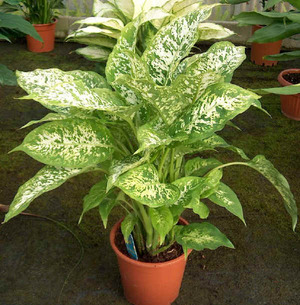 For this plant, it is advisable to buy a ready-made substance made specifically for the Aronievs group or for dieffenbachia itself. You can use soil with neutral acidity:
For this plant, it is advisable to buy a ready-made substance made specifically for the Aronievs group or for dieffenbachia itself. You can use soil with neutral acidity:
- 1 piece of leafy land;
- 4 parts of sod land;
- 1 part sand;
- 1 part peat.
Certainly need to drain... You can lay brick chips and charcoal. When planting a plant, you can add bone meal to the ground as fertilizer.
What plants are better not to bring into the house:https://flowers.bigbadmole.com/en/komnatnye-rasteniya/rasteniya-komnatnye-sposobnye-prinosit-v-dom-neschastya.html
Plant feeding
Dieffenbachia does not have a specific rest time, therefore this plant needs bait for a whole year. In summer and spring, it is necessary to fertilize once every 14 days, in winter every 2 months. The main condition is that top dressing should not have lime. Mineral dressing "Vito" proved to be excellent. You can use other liquid formulations for indoor deciduous flowers. Bait with nitrogen-containing organic fertilizers is useful. But not very much nitrogen is needed, otherwise the flower with white leaves will turn green.
Transfer
It is necessary to transplant dieffenbachia every year. The best time for transplanting is early spring. In summer, in hot weather, it is advisable not to do this - the flower may not take root.
The roots of dieffenbachia are brittle, you have to be careful. Transfer to new containers can be performed. The old drain must be removed. It is advisable to choose a pot a few sentiments larger than the previous one.
Care and reproduction
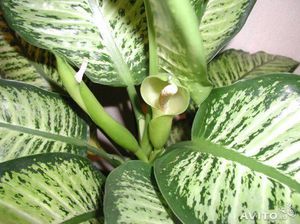 The most popular way of plant propagation is planting apical cuttings, they are rooted in sand and water or a mixture of peat and sand (1 to 1). From above, the stalk must be closed with glass or film. Install in a bright room without direct sunlight. When rooting in the ground, once every 7 days, a rooting agent (Kornevin or Zircon) must be added to the water for irrigation, this activates the germination of roots. The substrate must be warm (22-24 gr.).
The most popular way of plant propagation is planting apical cuttings, they are rooted in sand and water or a mixture of peat and sand (1 to 1). From above, the stalk must be closed with glass or film. Install in a bright room without direct sunlight. When rooting in the ground, once every 7 days, a rooting agent (Kornevin or Zircon) must be added to the water for irrigation, this activates the germination of roots. The substrate must be warm (22-24 gr.).
If the germination of the root system takes place in water, then when the roots reach 5 cm, they must be transplanted into a pot. When grown in sand feeding required, one fourth of the mineral fertilizer. When planting an earthen lump with a root, it is undesirable to break.
How does dieffenbachia propagate by parts of the stem? The stem must be cut into cuttings (11-16 cm), dried for a day, covering the cut with charcoal. The cuttings must be pressed horizontally to the ground so that half is on the surface.
The plant planted in this way shoots and takes root rather slowly (up to one year).If there is no development, and the cuttings have not rotted, then it is necessary to continue watering, the plant has taken root under the ground. When the first leaf appears, it is necessary to add fresh earth to the base of the shoot. After rooting, the flower must be transplanted, but the old trunk must be preserved. From the hemp, when internodes are on it, new shoots will grow.
Diseases and pests
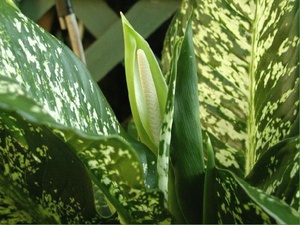 Dieffenbachia can affect scale insect, spider mite, thrips, aphids... Therefore, it is important to periodically inspect the flower in order to identify pests. Insect larvae are removed with a swab soaked in beer, garlic infusion, and soapy water. If the infestations are very large, then it is necessary to treat with actellik or karbofos. The air must be very humid.
Dieffenbachia can affect scale insect, spider mite, thrips, aphids... Therefore, it is important to periodically inspect the flower in order to identify pests. Insect larvae are removed with a swab soaked in beer, garlic infusion, and soapy water. If the infestations are very large, then it is necessary to treat with actellik or karbofos. The air must be very humid.
Detailed instructions for use and consumer reviews about Actellik:https://flowers.bigbadmole.com/en/uhod-za-rasteniyami/udobreniya/instrukciya-po-primeneniyu-aktellik-otzyvy-o-preparate.html
If you take care of dieffenbachia incorrectly, then this plant is often susceptible to fungal infection. This can happen from heavy watering. Check the roots for rot. Rotten roots must be cut off, and the cut sites must be covered with activated carbon or manganese. The flower must be transplanted into a new land treated with manganese.
Leaves can dry from significant temperature changes or cold air. If the leaves begin to turn yellow, then in this case there may be a number of reasons:
- burns from bright sunlight;
- abundant watering;
- lack of space;
- hard water.
Note to the gardener
How to prune dieffenbachia? The old leaves of the flower must fall off. When the bush is bare, it is cut at a height of 11 cm from the ground. Then, after a short time, young shoots are formed on the bush.
Is Dieffenbachia juice poisonous?
The sap of this plant is poisonous. Therefore, if there are children in the house, then it is advisable not to start it. It is advisable to do all manipulations with the plant with gloves. If the juice of the flower gets on the skin, irritation may appear. Causes swelling of the mucous membranes when it enters the oral cavity. The person cannot speak. Dieffenbachia in some countries used as a poison for mice.
How does Dieffenbachia bloom?
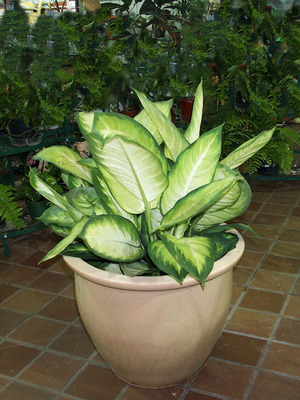 Dieffenbach blooms in spring (early March - late April). The flower has a creamy veil that emerges from the leaf axil. But in home cultivation, dieffenbachia blooms very rarely, and flowering does not last long. Then the flower withers, it must be cut off so that it does not take useful elements from the plant.
Dieffenbach blooms in spring (early March - late April). The flower has a creamy veil that emerges from the leaf axil. But in home cultivation, dieffenbachia blooms very rarely, and flowering does not last long. Then the flower withers, it must be cut off so that it does not take useful elements from the plant.
Signs associated with dieffenbachia
According to the signs, the flower is considered "muzhegon", the plant drives out all men from the house. Moreover, in the house where dieffenbachia is located, the spouses cannot have children for a long time. Because it is believed that to make dieffenbachia in the house - doom yourself to loneliness. Whether it is necessary to keep dieffenbachia at home, everyone determines for himself.
Growing dieffenbachia at home is not very difficult as it might seem at first glance. Knowing the basic rules, you can grow an evergreen plant for a whole year. But you need to remember about safety measures, since the flower is poisonous.


